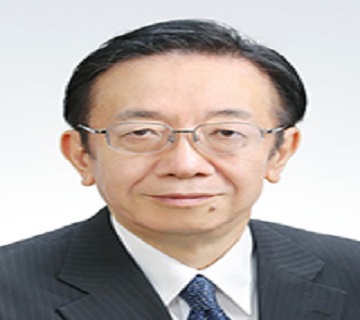Scientific Program

Takeshita
Professor, Tokyo Institute of Technology, Japan
Biography:
Kenji Takeshita got a doctor of engineering from Tokyo Institute of Technology in 1986. His research fields are Nuclear Fuel Reprocessing, Partitioning and Transmutation of Nuclear Wastes and Nuclear Waste Management. Currently, he is the director (professor) of Laboratory for Advanced Nuclear Energy (LANE), Tokyo Institute of Technology.
Abstract
We are developing a simultaneous recovery system of Mo and PGMs (Pd, Ru and Rh) from high - level radioactive liquid waste (HLLW) for the decrease in the number of glass bodies and the stable operation of glass melter, as shown in Fig.1. Mo and PGMs were adsorbed simultaneously from HLLW by an inorganic adsorbent, Al ferrocyanide, and separated mutually by solvent extraction process. In this study, the mass balance of Mo and PGMs in the proposed system was evaluated from the results of fundamental adsorption tests and the effect of the introduction of the adsorption system on the vitrified object production was discussed.
Simultaneous adsorption of PGMs and Mo from a simulated HLLW (sHLLW) with 26 elements was tested by Al ferrocyanide. 0.2g Al ferrocyanide was added to 5ml sHLLW in a vial, which was sealed and shaken at room temperature for 24 hr. The adsorption percentages of Mo, Ru, Rh and Pd from the sHLLWwere evaluated to be 75, 20, 40 and 100%, respectively. Co-adsorbed FP elements were Cs (adsorption percent: about 40%) and Zr (about 5%). The adsorption of rare earth elements (REEs) was not observed. Therefore, it is not necessary to consider the adsorption of MAs. These results suggest that Al ferrocyanide has the selective adsorption performance of PGMs and Mo.From these results, The mass balance of Mo and PGMs in the proposed adsorption system was evaluated for HLLW from spent PWR fuel with 45 GWd/T. 86% of Mo and 48% of PGMs can be removed by adding 80kg Al ferrocyanide to 1m3 HLLW. Table 1 shows the relation between the separation of Mo and PGMs from HLLW and the waste loading in vitrified objects under the conditions that the contents of Mo and PGMs in vitrified objects are 1.5wt%., which is limiting contents of Mo and PGMs for the stable operation of glass melter. These results suggest that the waste loading in vitrified objects can be enhanced from 22wt% to 35wt% by the introduction of the simultaneous adsorption system of PGMs and Mo.
- Material Chemistry and Development
- Material Characterization
- Energy Materials
- Biomaterials
- Nanomaterials
- Ceramic and Composite Materials
- Materials in Industry and Information Technology
- Defence and Aerospace Materials
- Computational Material Chemistry and Science
- Imaging of Materials
- Future scope of Material Chemistry

